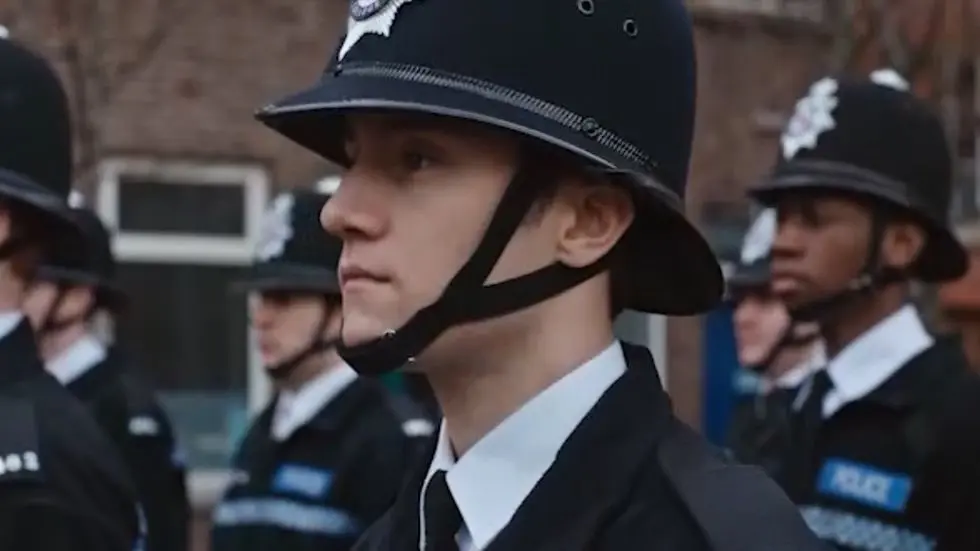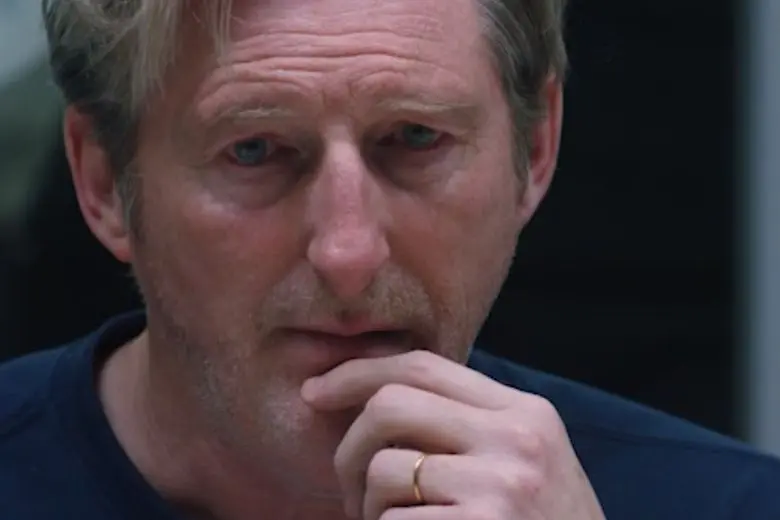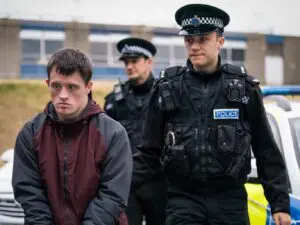Summary
Jed Mercurio pulls off a tense and wordy-as-ever season finale which answers questions (though not in the way many expected) and opens up more for the next season or two. Flawed, yet successful.
This Line of Duty Season 5 Episode 6 recap contains spoilers. You can check out our thoughts on the previous episode by clicking these words.
And so Line of Duty Season 5 is over, though the story of police corruption surrounding (or within?) AC-12 is not. Some loose ends have been tied up (to varying degrees of neatness), while others have been shown to be even more frayed than they had first appeared. But in the end, this is clear: the corrupt senior police who are caught are happy to present themselves as lone “bad apples”, and that suits the Police and Crime Commissioner too; this means there is no “institutional corruption” in the city police. Does that make the senior officials corrupt too, or simply ineffective?
This is of course what we’ve been wondering about Superintendent Hastings (Adrian Dunbar) for a little while now. Much of Episode 6 is taken up with his interviews by Detective Chief Superintendent Patricia Carmichael (Anna Maxwell Martin) and her sidekicks, and those interviews are terrific to watch: great acting from both leads, lots of detail to follow, some beautiful sarcasm and attempts to catch each other out with logic, evidence, emotion or surprises. Hastings clearly shows everything he is feeling during those interviews: trapped, scared, bitter at times and baffled. Dunbar’s acting has not impressed me particularly until today, but I really felt for Hastings during these scenes, so he must have been doing it right… especially as we see him bringing an envelope of money to Corbett’s widow in the closing scenes and have to wonder about him yet again. See, not everything in those interviews was cleanly resolved (his visit to Banks, turning off his phones during the Eastfield raid and the destruction of his computer for a start), so even if he’s not a Top Bent Copper in the Organised Crime Group, he may still have been in their pay now and then, perhaps. Carmichael had said at the end of Episode 5 that she planned to prove Hastings was H, and she is certainly intent on painting a big picture of corrupt actions and motives… but none of that shows he’s at the top of any syndicate, and much of it is based on shaky links and logic. I like her style a great deal, though: she mixes cold and polite in a professional way, not a bitchy way like Biggeloe.
The interviews (as well as Arnott and Fleming’s chat with Corbett’s widow) finally explain what the Northern Irish connections have all been about… or at least we know what has been said, but not necessarily what is true. These connections were so long ago though that it feels like a huge stretch for the plot: someone was found to go undercover in an anti-corruption operation who just happened to be the son of someone who died thirty years ago, and he was told Hastings was responsible for her death to motivate him to target Hastings. This someone – Corbett, of course – just happened to be ready and available to head this operation at just the time when the (as yet unidentified) high up corrupt police were ready to get Hastings and his team stopped. I’m not convinced… but it made for a great story.
Now on to Gill Biggeloe’s (Polly Walker) part in all this: she was one of two people involved in selecting Corbett for his key undercover role, and she’s the one who passed on that nugget to Corbett about his mother. It had been kind of obvious that she had some agenda (with or against Hastings), but only to us in the audience: no-one in AC-12 or AC-3 seemed to have any suspicion of her at all, until DS Steve Arnott (Martin Compston) and DI Kate Fleming (Vicky McClure) figure the targeting of their boss is too blinkered and go looking to find out how come John Corbett was in that role, after him, in the first place. And it’s a good job they did: it was starting to look like Hastings was done for, despite Biggeloe spotting a legal loophole in the search of his hotel room, based on all the little pieces of circumstantial evidence and suspicion adding up. (Actually, I’m not clear why Biggeloe was so keen to take his side in the interviews if she had sent Corbett after him in the first place; maybe just getting him badly shaken up and mistrusted – rather than convicted – was enough for the syndicate’s aims.)

As I indicated at the start, Biggeloe was content with being seen as “one bad apple”, and although she tried to summon an “urgent exit” (who from, we’ll never know) she might have had to reveal other names in later interrogation. Unfortunately, the script glossed over that possibility, just telling us at the end that she helped with inquiries and was given a new identity! But because of that risk, one of Carmichael’s sidekicks came at her in the ladies’ room with a knife… this was the young Sergeant Tina Tranter (Natalie Gavin), who had been quietly looking after evidence and little else so far. Her other sidekick, DI Michelle Brandyce (Laura Elphinstone) turned out to have been hasty with the search in Hastings’ room, putting her job at risk… and both combined show Carmichael’s team to be in question. If she returns in Line of Duty Season 6, as rumor would have it, she will have to be a lot sharper regarding the people she works with, not just those she is investigating.
After the dust settled from Biggeloe’s attack, we have the real conclusion to Season 5 Episode 6, back to the question of H’s identity. Steve Arnott takes another look at the video of Dot Cottan’s dying declaration (such as it is) and discovers not just blinking but tapping of his fingers, making – guess what – Morse code. Apparently, the blink on the letter H was supposed to direct them to the Morse code for H, which is four “dots”, suggesting there are four senior officers to look into, not just one to rule them all. Now come on, if that’s not a massive series of leaps and coincidences, I don’t know what is: the video screen just happened to be paused on that frame to inspire Arnott’s thoughts when he walked in, both he and Cottan knew Morse code, and Cottan worked out how to communicate all that while he was dying! Anyway, that’s the conclusion: the four were apparently made up of Cottan, Hilton, Biggeloe and one as yet unidentified. So if you’re wondering where Line of Duty could go next, it will probably be looking into that fourth, either as the main plot or in the background of another operation.
And then, of course, there is whoever those four reported to: a bigger kingpin. I wonder if they will consider looking into PCC Rohan Sindwhani (Ace Bhatti): not only has he looked nervous every time he’s appeared, and was content with declaring in a press conference that there is no institutional corruption in the police, but he was also the second person in the pair who selected Corbett for his undercover operation (which Arnott and Fleming ignored, for some reason). The other person who I’m certain will return will be Ryan Pilkington (Gregory Piper), a thirteen-year-old Fagin’s boy in season one, and now a seasoned throat-cutter and student police officer à la The Departed.
This is one of the great things about Line of Duty: any of the old characters or minor side plots from an earlier season can return; though I have a feeling this may not have been Mercurio’s idea until season three. We’ve had plenty of teasing about DI Matthew Cottan (Craig Parkinson) coming back – yes, even though he was shot dead – and there are other bent cops who are either in retirement, in hospital, in hiding or in prison: any of these could make an appearance, either pulling strings or tying them in knots.
The long arc is what builds the fan base, but I do hope the details in the plot are tighter next time. There were too many far-fetched connections or just-in-time discoveries. Overall, season five has been gripping, despite all that: and if people are talking about it at work, on the bus, on social media, surely that proves its success.




